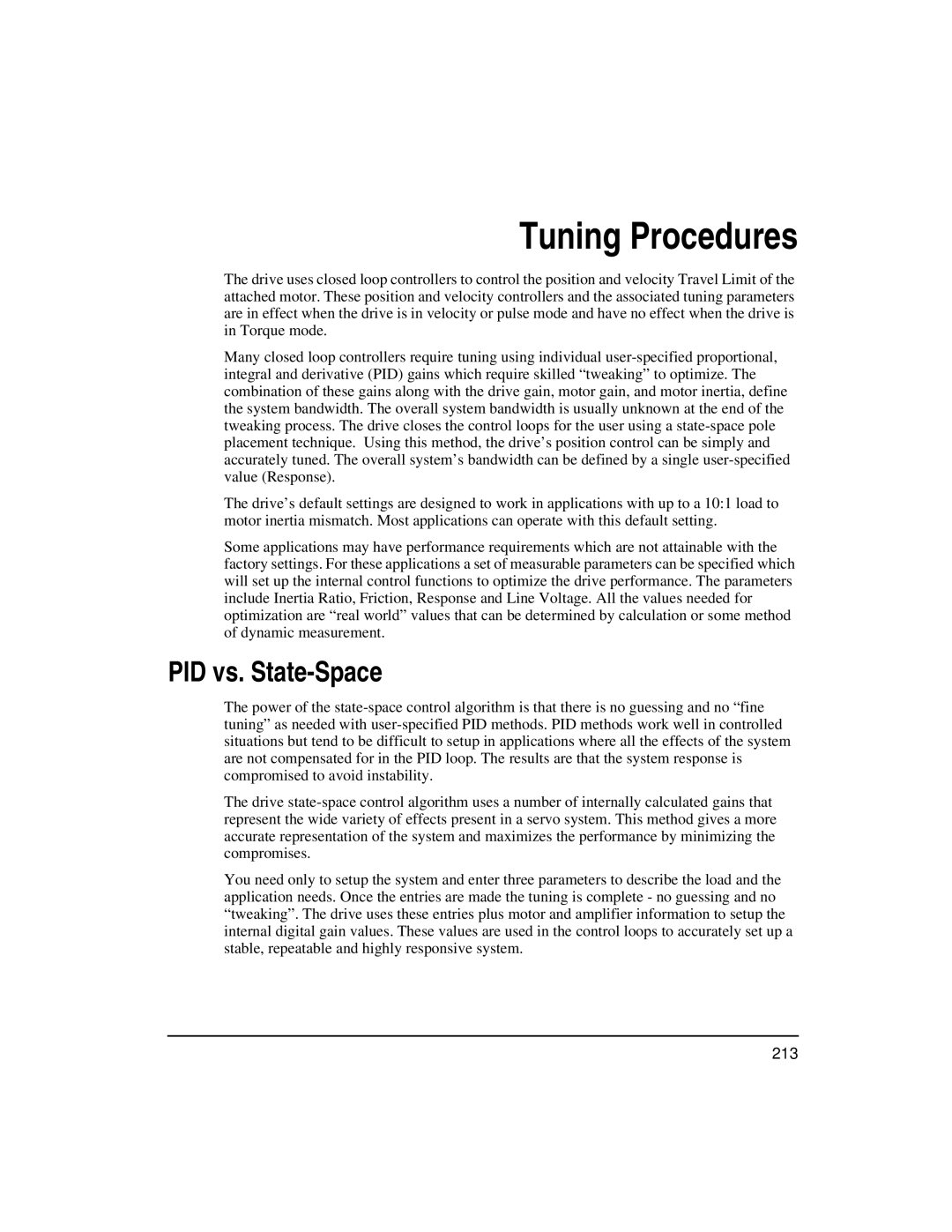Tuning Procedures
The drive uses closed loop controllers to control the position and velocity Travel Limit of the attached motor. These position and velocity controllers and the associated tuning parameters are in effect when the drive is in velocity or pulse mode and have no effect when the drive is in Torque mode.
Many closed loop controllers require tuning using individual
The drive’s default settings are designed to work in applications with up to a 10:1 load to motor inertia mismatch. Most applications can operate with this default setting.
Some applications may have performance requirements which are not attainable with the factory settings. For these applications a set of measurable parameters can be specified which will set up the internal control functions to optimize the drive performance. The parameters include Inertia Ratio, Friction, Response and Line Voltage. All the values needed for optimization are “real world” values that can be determined by calculation or some method of dynamic measurement.
PID vs. State-Space
The power of the
The drive
You need only to setup the system and enter three parameters to describe the load and the application needs. Once the entries are made the tuning is complete - no guessing and no “tweaking”. The drive uses these entries plus motor and amplifier information to setup the internal digital gain values. These values are used in the control loops to accurately set up a stable, repeatable and highly responsive system.
213
